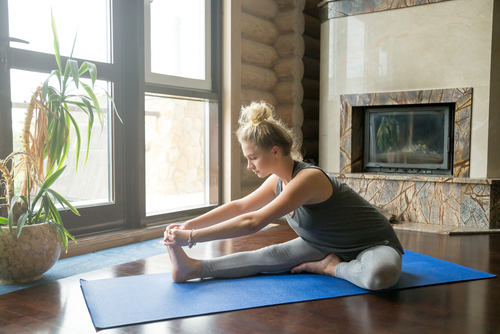
If you want to really see the roots of core strengthening, follow a baby through his or her milestones. The first time they roll over, the core abdominal muscles awaken. They don’t even use their arms or legs….it’s all abs working to move them from the back to the stomach. We start out life by using and strengthening our core muscles. As we move through life we gain the ability to use our limbs more efficiently, which gives us (from toddlerhood onward) more independence and skills. However, it also means that the core muscles no longer get the unintentional strengthening they did before the arms and legs began to assist with movement. As we go through life and become adults, endurance and stability can suffer as a result.
Why is this? The deep abdominal muscles support the low back, which in turn lend stability and support the pelvis, hips, knees, and even the shoulders and arms. The biggest player in this repertoire is the transversus abdominus muscle. This muscle is in the abdomen and lies under the rectus abdominus (commonly know as the 6-pack). It is a giant, powerful muscle that wraps around the torso and attaches to the vertebrae. Because of this, when the transversus abdominus is strong it stabilizes the spine. This minimizes the possibility of injury occurring when we move our arms and legs (think….walking, sports, carrying heavy loads and various everyday tasks).
Unfortunatley, this muscle does not get strong with the average work-out. This transversus abdominus is like a sleeping giant, it lays around lazily and lets others (i.e. the 6-pack muscle, hip muscles, low back muscles, etc.) do the work . However, with focus and consistency you can awaken this sleeping giant. Then it can keep all your muscles and joints strong and healthy!
So how do you rouse this muscle and use it to bring strength to the low back and other key parts of your body? Try the following exercises to get the transversus abdominus to kick in.
- Lie on your back with your knees bent and feet flat on the floor.
- Place your hands on the front of your hip bones, then move your fingers about an inch in, towards the center of the body, and press with slight pressure.
- Now cough or laugh. When you do this you should be able to feel a little wiggle or jump of the T.A. muscle.
- Now that you’ve figured out which muscle to engage, you can start strengthening the T.A.
- Keeping your fingers on the T.A. muscle take an inhale (the belly will expand), then exhale and tighten the muscle by bringing the belly button towards the spine. (You should be able to feel the muscle tight under your fingers)
- Continue to engage the muscle as you take a few breaths. This is by far the hardest part of the exercise. Intuitively we want to hold our breath.
- On an inhale relax the muscle, then repeat this 10 times.
- Once you learn how to engage this muscle with breath, try to lift one foot a few inches off the floor.
- Lower the foot, then lift the other a few inches off the floor.
- Continue to alternate while you’re engaging the T.A. (This is like marching with small steps). This will train the T.A. muscle to to engage with movement.
Consistent training of the transversus abdominus will reward you with less incidence of low back pain or injury of the extremities.
If you’d like a personalized sequence or an individual session focused on your health goals, please drop us a line at lorie@trucoremethod.com. You can also sign up for a class or private session by clicking here. For more tips on pain relief and injury prevention sign up for our newsletter here, or follow us on social media


